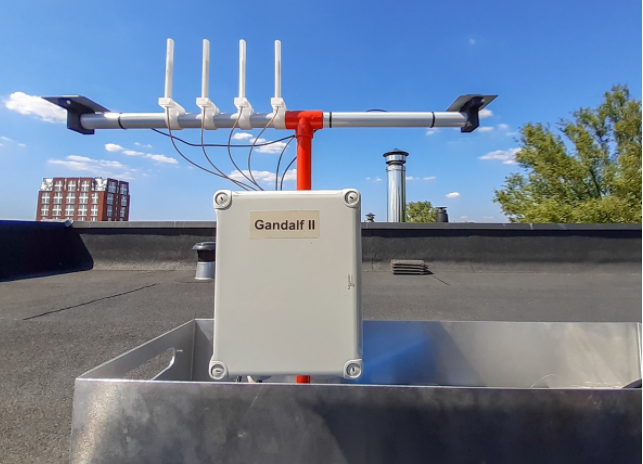The NATO Communications and Information (NCI) Agency has built an experimental prototype system to detect, identify and localize small Unmanned Aircraft Systems (sUASs) using low-cost commercial devices and machine learning.
According to an NCI press release:
“The ARTEMIS system (Advanced Recognition Tool using Electromagnetic (EM) waves for Identifying unmanned aerial Systems) uses advanced techniques to detect and classify Radio Frequency (RF) signals. The system can classify what type of signal it is by processing only 40 milliseconds of data, with a probability of correct classification above 90 percent. The system continuously monitors the bandwidth where drones normally operate and automatically detects any RF emissions.”
“Once detected, a process entirely based on machine learning and pattern recognition will allow us to classify and identify the emission,” said Franco Fois, Senior Scientist and ARTEMIS Lead Engineer. “And this emission could be an emission from Wi-Fi or Bluetooth, because they are entitled to work in the same band, but it could also be a drone emission.”
The NCI reports that if the signal is found to be from a drone, the system will also try to calculate the direction of arrival of the signal to localize the drone. The system can also localize the person who is controlling the drone from the ground.
“The identification of the type of drone was a key driver of this work, since that information determines the threat response, “ says NCI. “Very high percentages of correct classification were achieved in experiments using up to 10 different drones.
“ARTEMIS serves to prove that it is possible, with low-cost equipment, to counter the threat posed by commercial drones,” said Edison Cristofani, Radar and Signal Processing Engineer at the Agency.
In particular, the system uses software-defined radios and virtual instrumentation, which Cristofani said is “a game changer.”
“These tools made possible fast prototyping – implementing changes or updates in a matter of hours,” Cristofani said. “They provided us with a great degree of flexibility.”
ARTEMIS was sponsored by the NATO HQ C3 Board Navigation and Identification Programme of Work. It belongs to a wider family of sensors designed and built by NCI Agency in the past decade.
“The really cool thing of this work is that it’s all done in-house inside the Agency,” said Principal Scientist René van der Heiden, Project Manager of the work. “And I say ‘in-house’ but much of it was done in attics and gardens during the recent COVID-19 lockdown.”
The Agency developed the prototype in-house to help the Agency continue to remain a ‘smart buyer’.
“We did this so we can better understand the ‘state of the art’ in drone detection/identification/localisation,” Van der Heiden said. “Once we start buying equipment from industry we know what is technically possible, we know what is available and we are able to separate the scientific truth from fiction.”
When this work is done by NATO, says the NCI, another added benefit is that it then becomes available to all NATO nations. “All of the Nations practically can have access to this information and that can help their own research establishments or their own industries to develop suitable systems,” Van der Heiden said. “This system will give us very good opportunities also to cooperate with other Nations,” Fois said.
Other agencies and Nations have prototype systems that are likely complementary to this one.
“The work of NATO on countering the threat posed by small drones is benefitting from these developments. As the threat is rapidly evolving, so the countermeasures shall be innovative and merge different domains: from classical radio frequency and signal processing techniques, to sensor fusion and machine learning. This prototype opens new avenues for research, development and finally deployment,” said Dr Claudio Palestini, Officer in NATO’s Emerging Security Challenges Division.
For more information
https://www.ncia.nato.int/about-us/newsroom/nato-experts-build-prototype-to-detect–identify-and-localize-small-drones.html




